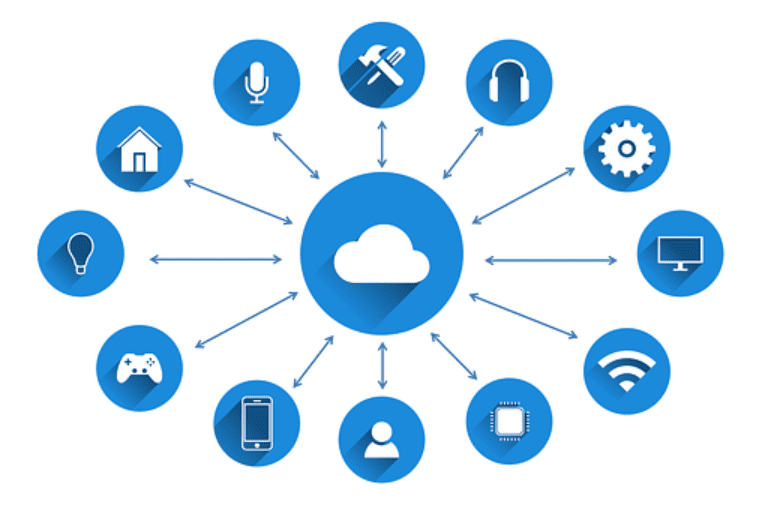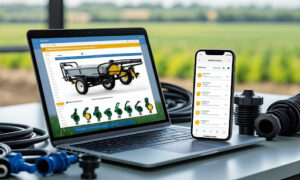The auto-shipping industry has been of tremendous help to people, as car shippers have assisted in seamlessly transporting vehicles from one city to the next without much hassle. Also, with technological advancement, car shipping has become more efficient and environmentally friendly. However, it wasn’t so when it was first conceived, and the sector has transformed right from when automobiles were invented till now.
Today, the auto-shipping industry is the most preferred way of transporting cars from city to city and with good reasons. With the advent of new technological innovations, more cars are being delivered quickly and conveniently to their owners. What are the innovations that auto-shippers are taking advantage of and how have they improved this sector? Here are a few of them that you should know.
Cloud technology

Cloud technology has transformed how car shippers send and store information regarding their jobs, client details, etc. Before the invention of cloud technology, they relied on external hardware to store all the information they needed to perform their duties. However, this hardware was expensive to install, and its maintenance was time-consuming and costly as well. This, in turn, limited their efficiency to deliver their shipment on time. Thanks to the cloud, however, auto-shippers can now store all their information on a remote database such as Google Drive or Dropbox. They can also retrieve the information at any time, provided that they have an electronic device connected to the internet. This advancement has played a vital role in reducing operational costs, improving turnaround time, customer service, and maximizing profits.
For instance, instead of lugging heavy hardware or papers around, car shippers can now access their client information from their smartphones. What’s more, it prevents them from losing their data completely in the event of computer malfunction. This presents a lot of benefits for car shippers, such as saving time, reducing costs, and increasing speed. Additionally, it improves efficiency, productivity, performance, and security. Besides, cloud technology helps companies track and monitor their trucks’ movement and dispatch information to their drivers more quickly and reliably.
Lightweight materials for trucks
Another technological advancement in the auto shipping industry is the use of lightweight materials in trucks’ manufacturing. These advanced materials are needed for enhancing the economical use of fuel while ensuring optimum performance and safety. Studies have shown that reducing a vehicle’s weight by 10% can bring about a 6% to 8% improvement in fuel consumption. Therefore, replacing truck components made of cast iron and steel with lightweight materials such as fiberglass, high strength steel, carbon fiber, polymer composites, aluminum (Al) alloys, and Magnesium (Mg) alloys can drastically reduce its body weight and chassis by 50%. This, in turn, will reduce the truck’s fuel use and additional costs.
Shipping trucks and other vehicles made with lightweight materials can carry out advanced emission control systems, making it a sustainable alternative. Also, they’ve been tested and proven to absorb energy better than steel, providing more protection for a driver upon impact. This makes them a more secure option to use in areas with poor roads, as they’re easier to maneuver and can absorb shocks without affecting the vehicle or the driver. They also reduce the brakes’ risks, as heavier vehicles require the brakes to work harder, thereby damaging the brakes and causing a potential accident.
Internet of things

The Internet of things (IoT) involves an advanced network, where physical items are fitted with sensors and other technologies to exchange data with other systems and devices over the internet. Examples of this development are seen in aspects of daily life, such as high-speed internet, smart homes, portable health monitors, just to name a few. It has been greatly embraced by many industries, with the auto-shipping industry taking the lead. IoT has helped auto-shippers discover and use the most efficient routes, and maximize fuel usage to make their trips less stressful.
Aside from its efficiency and convenience, IoT will also improve assisted driving features, which play a pivotal role in keeping drivers and their vehicles safe. For example, with IoT-enabled communication lines, auto-shipping trucks will have instantaneous information on what they should expect on the road. This information will help drivers decide on when to slow down or turn to avoid crashes. Also, seat belt sensors can examine the driver’s physical state for signs of fatigue and intoxication. These sensors will render the car inoperable if the driver falls under any of these categories. The uses of IoT are endless and keep evolving to improve the driving experience.
Sustainable fuel sources
Petrol and diesel have been the main fuel sources for vehicles for over 100 years and are easier to buy because of their availability. However, they’re obtained from fossil fuels that aren’t renewable and are estimated to be depleted by the year 2060. Also, they produce a lot of carbon wastes, which contributes to environmental degradation. These reasons make petrol and diesel unreliable and relatively costly, compelling the UK government to ban their use by 2040. This is why automobile manufacturers are working towards the incorporation of fuel sources that will not deplete soon.
Eco-friendly and sustainable fuel source options include bioethanol derived from corn and sugarcane and biodiesel derived from vegetable oils and animal fats. Other options include heat powered by thermoelectric technology, kinetic energy, and steam. Hydrogen, air, nitrogen, and LPG are other fuel sources that manufacturers are considering. Unlike fossil fuels, these options won’t be depleted any time soon, as long as measures are put in place to renew them each time they’re used. They also have low carbon emissions, which makes them safe to use and also environmentally friendly.
Autonomous trucks
Although still in their developmental stages, self-driving trucks have been predicted to dominate the auto-shipping industry and other transport industry sectors. These trucks don’t require human drivers and are similar to self-driving cars. They both use the same underlying technology; sensors such as cameras, radars, and lidars provide data to a computer that controls the vehicle using skills adopted through a substantial amount of simulation and training.
Autonomous trucks are indeed the future of auto-shipping, as building them might be relatively easier than building self-driving cars. This is because they follow fixed routes and are always on the highway, which is easier to navigate than surface streets. Also, trucks serve as a better platform for self-driving technology, as their large size provides more power for the computer and a better view for sensors that can be mounted off the ground.
Self-driving trucks reduce accident rates as they’re programmed to move in their lane only and at a predetermined speed. Research shows that in 2018, accidents involving trucks were responsible for the death of 5000 Americans and that 90% of them were due to human error. With autonomous trucks, these threats are eliminated, as they won’t weave in and out of traffic, drive under the influence of alcohol, text while driving, or get distracted. Also, they’ll be able to operate every day, which will boost business productivity and maximize profits. Also, they’ll be able to map out their routes to avoid driving through the cities during rush hours, hereby limiting traffic.
The developments listed above are clear examples of how rapidly the auto-shipping sector is advancing. The use of technology is limitless and more so in the car shipping industry. With technology always evolving and innovations spring forth, you can experience more disruptive avenues to deliver cars and promote the industry.



































